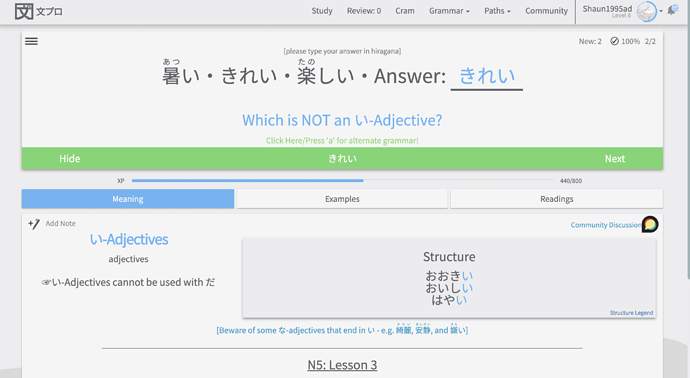Structure
*
View on Bunpro
So I only just started this thing like a week ago so I don’t really understand much yet, so forgive this question 
One this lesson review, it asked what is not an い adjective. I guessed correctly but I don’t actually understand why, since they all end in the same way.

